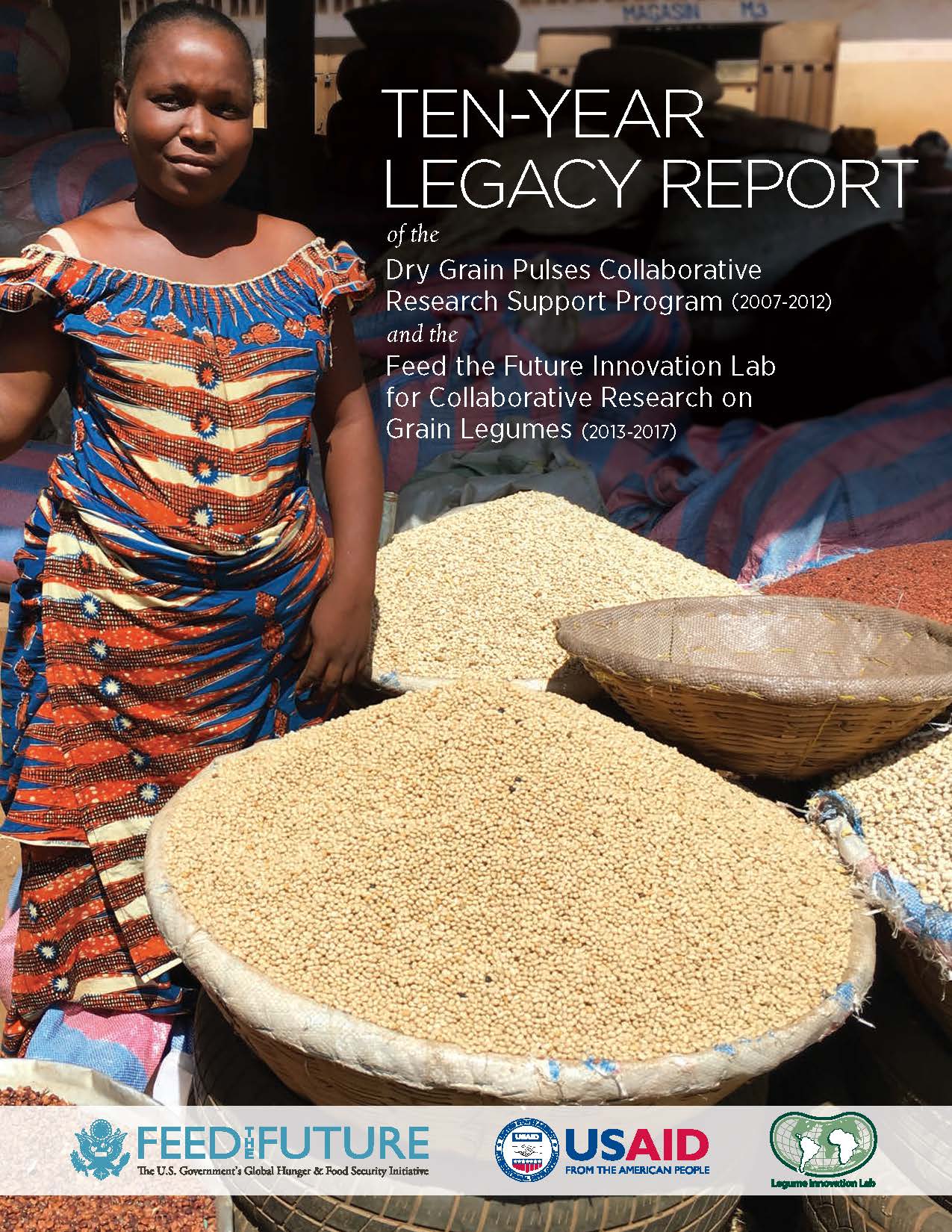Legacy Report
TEN-YEAR LEGACY REPORT of the Dry Grain Pulses CRSP (2007-2012) and the Feed the Future Innovation Lab for Collaborative Research on Grain Legumes (2013-2017)
Legacy Report (Low resolution 12 MB)
Legacy Report (high resolution 23 MB)
Executive Summary of Legacy Report
The Legacy Report of the Dry Grain Pulses CRSP (2007-2012) and Feed the Future Innovation Lab for Legume Systems Research (2013-2017) program summarizes the innovative administrative leadership, technical research, training, and institutional capacity strengthening achievements that give evidence of the program’s performance and contributions to improving the livelihoods of stakeholders of grain legume value chains in Feed the Future priority countries and regions. The salient achievements are described in this Legacy Report through a series of articles in seven important areas.
- Technical Vision: Research themes and strategic objectives were formulated that responded to USAID’s Initiative to End Hunger in Africa and the Feed the Future Research Strategy (2011). A portfolio of competitively awarded multidisciplinary collaborative research and institutional capacity strengthening projects focusing on common bean and cowpea was constituted and implemented in 21 countries in Sub-Saharan Africa, Latin America and the Caribbean. (A.1 and 2; Appendix 1 and 2)
- Improving Grain Legume Productivity: Meaningful advances in increasing bean and cowpea productivity on smallholder farms were achieved through the development and release of 93 high yielding varieties with resistances to economically important diseases and insect pests, adaptations to drought, high temperature and low fertility, and preferred grain quality traits. The development of sustainable bio-controls for cowpea insect pests will close the yield gap in cowpea systems. (B.1 - 6)
- Improving Smallholder Farmer Integrated Crop Management Decision Making and Livelihoods: Innovative approaches (innovation platforms), tools (decision support aids, SAWBO, soil maps), and models (community based seed multiplication) will enable marginalized smallholder bean and cowpea farmers to have access to technologies and make better integrated crop management decisions. (C.1 – 5)
- Improving Human Nutrition and Health: Landmark findings on the roles of cowpea and bean in reducing growth faltering (stunting) and gut inflammation in young children, respectively, plus the identification of health promoting bioactive compounds in cowpea will give rise to food-based strategies for improving child growth and nutrition in nutritionally compromised regions of the world. (D.1 and 2)
- Strengthening Human and Institutional Capacity: A new generation of grain legume scientists, with cutting edge research skills and a mindset for innovation, who appreciate the value of multidisciplinary collaboration and are networked, will be returning to their home countries and research institutions to be problem solvers, catalysts of sustainable change, and advocates for strengthened grain legume value chains. (E.1-3)
- Evidence of Achievement and Impact: Demonstrated impacts to the grain legume sectors in both Feed the Future countries and the U.S. and scholarly research publications give evidence of the incredible performance by program PIs. (F.1-4; Appendix 3 and 4)
- Administrative Leadership by Michigan State University: Effective technical and administrative leadership by the Management Office at Michigan State University has contributed to bringing international distinction to the DGP CRSP and LIL. It is now recognized as a premier multidisciplinary community of fundamental to applied scientists collaborating in grain legume research and committed to innovation and transformation of grain legume value chains. (G.1-4)



